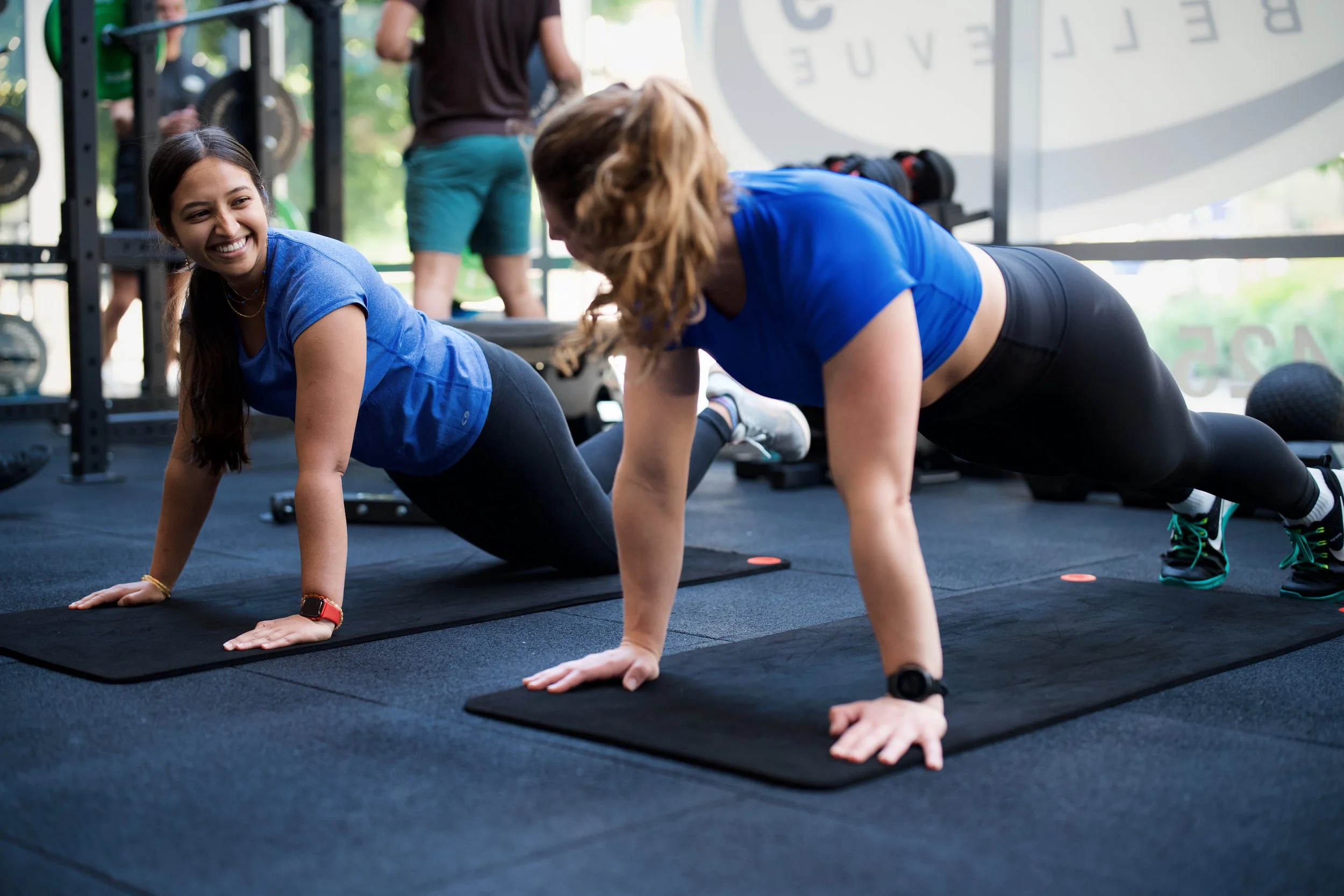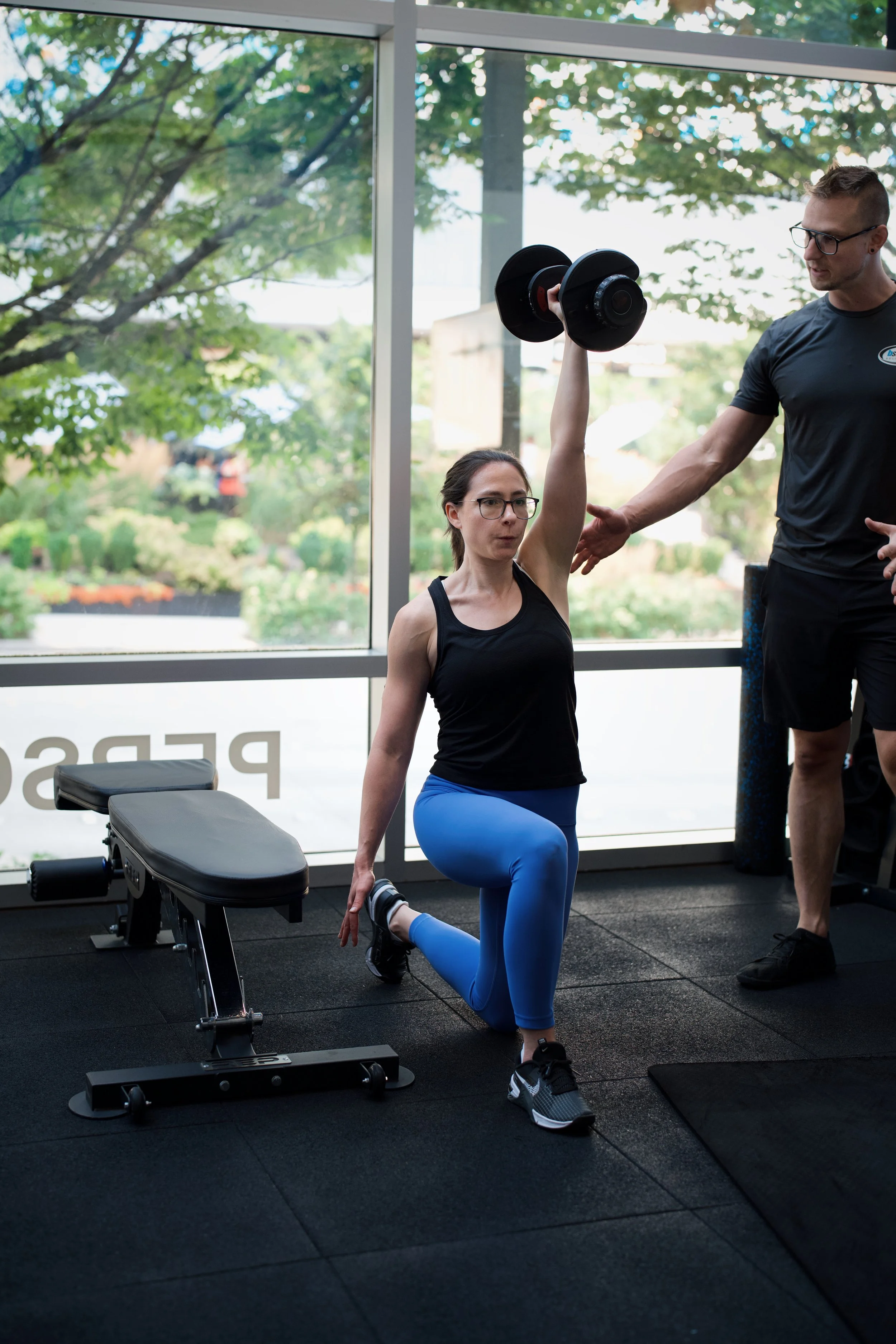Beginner Strength: Your First 12 Weeks Blueprint
Starting something new is hard, especially strength training. The gym can feel intimidating, the information online is confusing, and everyone seems to be doing something different.
At bStrong, we’ve coached countless beginners through their first 12 weeks. We know exactly what works and what to avoid. This guide walks you step by step through training safely, building confidence, and making progress that lasts.
The 3 Biggest Beginner Mistakes (And How to Avoid Them)
Doing too much, too soon
Progress comes from gradual overload, not exhaustion. Start with manageable sessions and add a little at a time.Skipping form and fundamentals
Master the core patterns: squat, hinge, push, pull, carry. Good technique protects joints and builds strength faster.Lacking structure or accountability
Random workouts lead to random results. A simple plan and a coach keep you consistent week after week.
The 12-Week Framework
| Phase | Focus | What You’ll Feel |
|---|---|---|
| Weeks 1–4: Learn the Movements |
Practice core lifts with light resistance. Focus on form, range of motion, and breathing. | “I’m learning what to do.” |
| Weeks 5–8: Build the Base |
Add small increments in weight or volume. Aim for 2–3 consistent sessions per week. | “I’m getting stronger and moving easier.” |
| Weeks 9–12: Confidence & Momentum |
Slightly more reps or weight. Introduce simple variations. | “I feel confident and ready for more.” |
What a Good Beginner Workout Looks Like
Keep it simple and repeatable. Here’s a structure that works for nearly everyone:
- Warm-up (5–8 min)
- 2 mobility drills for hips and shoulders
- Light cardio or dynamic movement
- Main Strength Block (30–35 min)
- 3 compound lifts: one push, one pull, one squat or hinge
- 1–2 accessory moves for weak links
- Core or Conditioning (5–10 min)
- Planks, carries, or short finishers
- Cool Down (3–5 min)
- Easy breathing and gentle stretching
| Day | Main Lifts | Accessory | Finisher |
|---|---|---|---|
| A | Goblet Squat, DB Row, DB Floor Press | Band Pull-Apart | Farmer Carry |
| B | Kettlebell Deadlift, Incline DB Press, Assisted Pullup | Split Squat Bodyweight | Plank Series |
| C | Box Squat, Cable Row, Pushup Incline | Bench Glute Bridge | SA Stationary March |
Tip for you: If a move bothers a joint, reduce range, lighten the load, or swap the exercise. Progress comes from what you can repeat safely.
How to Track Progress Without the Scale
Early wins show up in performance and how you feel. Track:
Sessions completed each week
Reps or weight used on your core lifts
Energy and mood after training
Sleep quality and next-day soreness
Over time the physical changes follow the habit. If fat loss is a goal, see our guide on Fat Loss.
Overcoming Fear & Intimidation
Everyone starts somewhere. The most successful beginners are not the most athletic. They are the most consistent.
At bStrong, your coach guides every rep and answers every question. You will never be left guessing. Confidence grows from clear instruction and small, steady wins.
The bStrong Advantage – Coached Confidence
Step-by-Step Guidance
We teach proper form from day one so you feel safe and in control.
Structured Progression
Your plan is mapped for future workouts. Each session builds on the last. No guesswork.
Accountability That Works
When a coach expects you and your group depends on you, consistency becomes automatic.
Your First 12 Weeks, Simplified
You do not need perfect motivation. You need a clear plan, smart coaching, and a schedule you can keep. Start with two sessions per week. Add a third when life allows.
Local Spotlight – Redmond & Bellevue Beginners Welcome
If you are new to strength training, start here.
Our Redmond and Bellevue teams specialize in beginner coaching inside focused 50-minute sessions that fit any schedule.
Beginner FAQ
How often should beginners strength train?
Two to three sessions per week is enough. Focus on repeating a simple plan that builds confidence and consistency.
How heavy should I lift at first?
Pick a weight you can move with control for the target reps. If the last two reps feel challenging but you can keep good form, you chose correctly.
What if something hurts?
Stop that movement and modify. Try a shorter range of motion, lighter load, or different variation. Dull stiffness often improves with movement; sharp pain means rest or adjust.
Do I need cardio too?
Walking is the best place to start. Add short finishers or intervals once you’re consistent with strength sessions.
How long until I see results?
Most people feel noticeable changes in energy and confidence within 3–4 weeks. Strength and visible progress typically appear within 8–12 weeks of consistent training.


